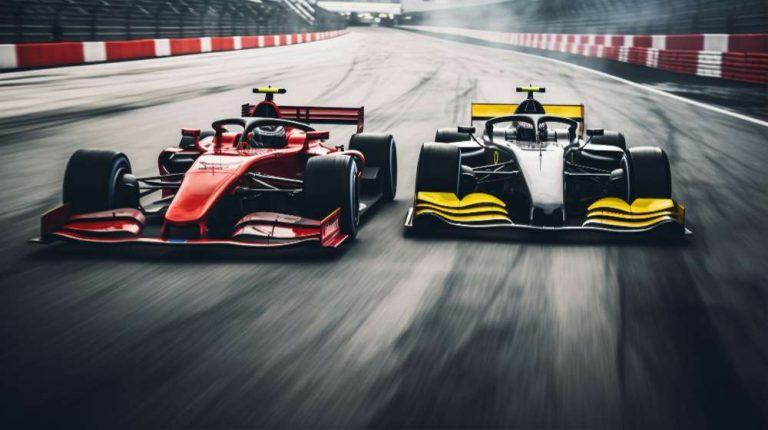MotoGP Tyres More Than Just Rubber on the Road
In the exhilarating world of MotoGP, a myriad of elements plays a part in a rider’s success, and among the most crucial is the tire. These are not your ordinary tires you find on a typical street bike. MotoGP tires are masterpieces of technology and innovation. They serve as the crucial link between the bike’s power and the track, and understanding their science is essential for anyone passionate about the sport.
Material Science and MotoGP Tyres
At the core of a MotoGP tire lies the careful selection and combination of materials. Manufacturers spend millions on research, continually testing different rubber compounds to achieve the perfect blend. This perfect blend should not only offer grip but also provide stability at high speeds. The tires are subjected to extreme forces, from rapid acceleration to hard braking. The materials used need to be both flexible and resilient to withstand this punishment.
Temperature
Temperature dramatically affects a tire’s performance. A cold tire might not grip as effectively, whereas an overheated one can degrade swiftly. MotoGP teams use tire warmers to maintain an optimum temperature even before the race starts. During the race, the rider must manage the tire’s temperature by moderating their riding style, ensuring that it remains in the ideal range for maximum grip.
Understanding Tire Wear and Its Impact on Strategy
A tire’s life in MotoGP is short-lived. The immense power of the machines combined with the aggressive riding style leads to rapid wear. But, understanding wear patterns can provide teams with invaluable insights.
Types of Wear and Their Indications
- Uniform Wear: Often indicates a well-balanced setup. It shows that the tire is being utilized efficiently across its width.
- Center Wear: This type of wear can suggest a lot of straight-line acceleration or a tire pressure issue.
- Edge Wear: More commonly found on tracks with many high-speed corners, indicating the rider is pushing hard in the bends.
The Strategy of Selecting the Right Tyre Compound
In MotoGP, multiple tire compounds are available for teams. Hard, medium, and soft are the general classifications. A hard compound offers durability but may lack grip, especially in cooler conditions. In contrast, a soft compound provides maximum grip but wears out faster. Teams need to weigh the pros and cons based on track conditions, riding style, and race strategy to choose the perfect tire.
Decoding the Mystery Behind Grip
Grip, in its essence, is the friction between the tire and the road. But in MotoGP, achieving optimal grip isn’t just about the rubber’s quality.
How Tread Patterns Influence Grip
Unlike many road bikes, MotoGP tires are slick – devoid of any tread patterns. This design maximizes the contact area with the road, providing optimal grip. However, in wet conditions, riders switch to tires with grooves that channel water away, preventing hydroplaning and maintaining grip.
The Physics Behind Lean Angles and Grip
Ever witnessed a MotoGP rider leaning precariously close to the ground during a corner? That’s a showcase of the tire’s grip in action. The more a rider leans, the more the centrifugal force tries to push the bike away from the corner. The tire’s grip counteracts this force, allowing riders to maintain their line and speed through the bend.
The Influence of External Conditions on Tire Performance
Elevation and Air Pressure’s Subtle Effects
Many might not consider elevation and air pressure as significant factors in tire performance, but they play a crucial role. Tracks located at higher altitudes often have lower air pressure, which can affect tire inflation. A correctly inflated tire offers optimal contact with the road, so understanding these nuances is essential for teams to ensure they’re getting the best from their rubber.
Track Surface and Its Love-Hate Relationship with Tires
Every track has its own personality, and the surface is a big part of that character. Some circuits are smooth, providing consistent grip, while others can be abrasive, causing faster wear. Then there are tracks with ‘bumps’ or ‘undulations’, presenting unique challenges for tire stability and grip. Teams often have to adjust their setups and strategies based on these track-specific characteristics.
Tires and Bikes Growing Together
How Bike Design Influences Tire Development
The evolution of MotoGP bikes doesn’t occur in isolation. As bikes become faster, more aerodynamic, and laden with technology, tire manufacturers need to adapt. The demand for better lateral grip, improved braking stability, and rapid acceleration means that tire designs are constantly evolving to meet these challenges.
The Human Element in Tire Progress
While data and technology drive much of modern MotoGP, the human element remains irreplaceable. Riders provide invaluable feedback to tire manufacturers. Their ‘feel’ for the bike, how it responds in corners, under braking, or during swift accelerations, helps guide the development of future tire iterations.




